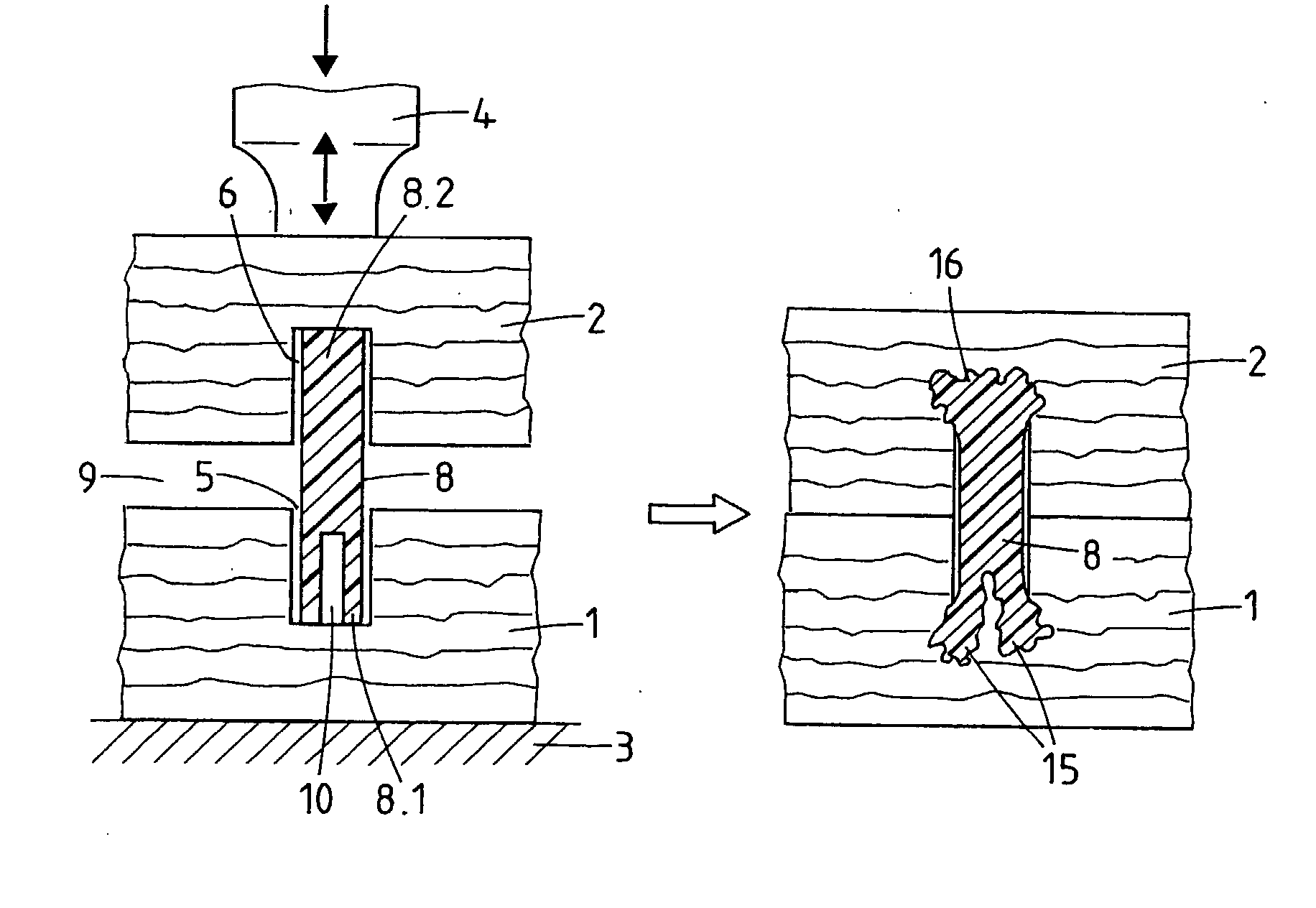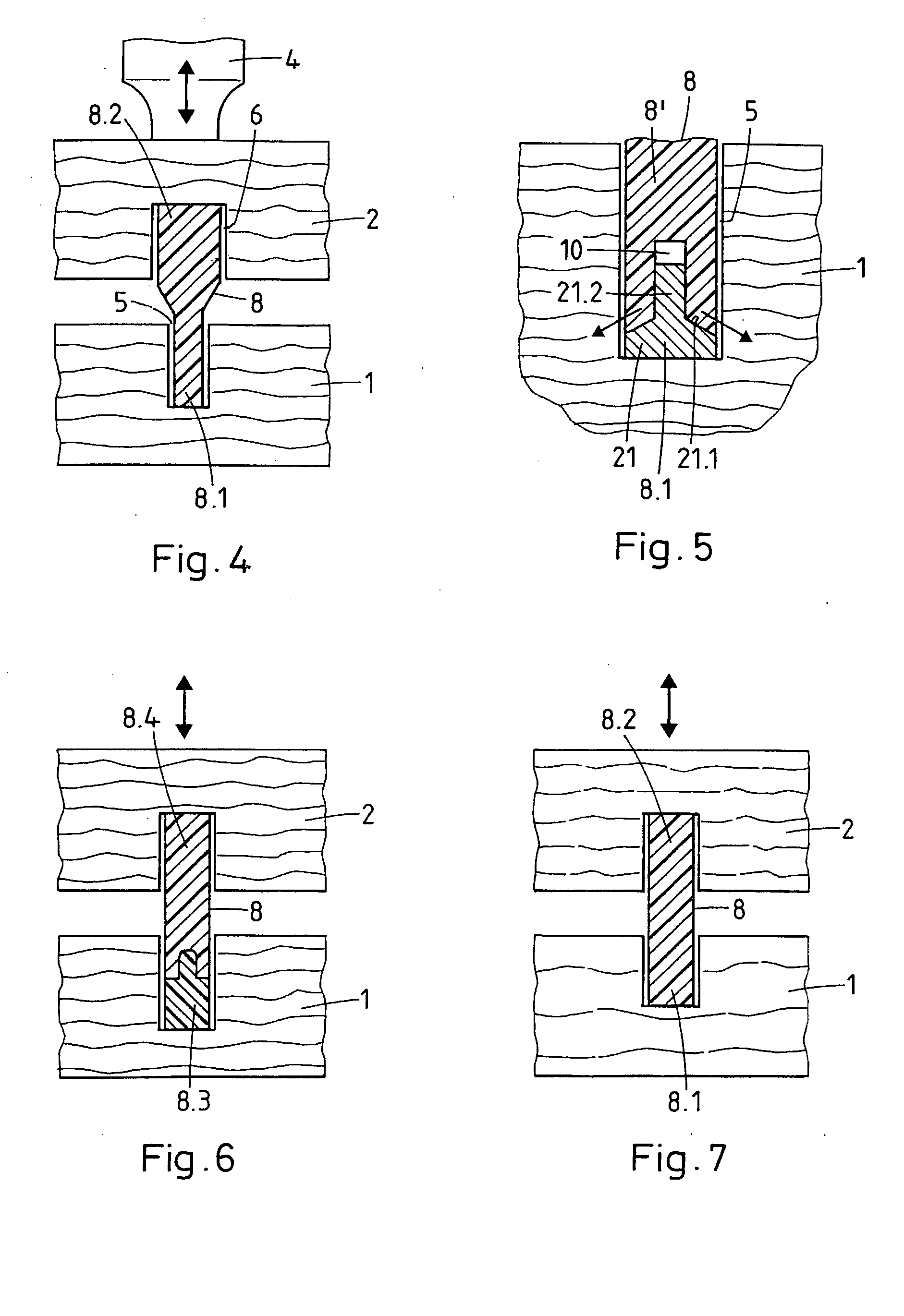Method for Joining Two Objects and Corresponding Joining Element
a technology of joining elements and objects, applied in the field of joining two objects and corresponding joining elements, can solve the problems of unsatisfactory or not even satisfactory, effect needs to be counterbalanced, and characteristics of vibration transmission are not optimal, so as to improve the coupling of mechanical vibration
- Summary
- Abstract
- Description
- Claims
- Application Information
AI Technical Summary
Benefits of technology
Problems solved by technology
Method used
Image
Examples
Embodiment Construction
[0028]FIG. 1 shows the method according to the invention using a first exemplary embodiment of an asymmetric joining element and a pair of identical blind holes (identical regarding bottom face, not necessarily regarding depth) provided as recess between the two objects to be joined. Joining element and objects to be joined are shown in section parallel to the direction of the applied pressing force, i.e. parallel to a line connecting the proximal and the distal joining element ends. The two objects are e.g. wooden boards or chipboard elements or consist of another porous material. The assembly is shown both before application of pressure and vibration (left hand side) and after application of pressure and vibration (right hand side).
[0029] For joining the two objects 1 and 2, they are positioned between a support 3 and an excitable element 4 (e.g. sonotrode of an ultrasonic device), the first object 1 on the side of the support 3 and the second object 2 on the side of the excitabl...
PUM
| Property | Measurement | Unit |
|---|---|---|
| thermoplastic properties | aaaaa | aaaaa |
| temperature | aaaaa | aaaaa |
| density | aaaaa | aaaaa |
Abstract
Description
Claims
Application Information
 Login to View More
Login to View More - R&D
- Intellectual Property
- Life Sciences
- Materials
- Tech Scout
- Unparalleled Data Quality
- Higher Quality Content
- 60% Fewer Hallucinations
Browse by: Latest US Patents, China's latest patents, Technical Efficacy Thesaurus, Application Domain, Technology Topic, Popular Technical Reports.
© 2025 PatSnap. All rights reserved.Legal|Privacy policy|Modern Slavery Act Transparency Statement|Sitemap|About US| Contact US: help@patsnap.com



